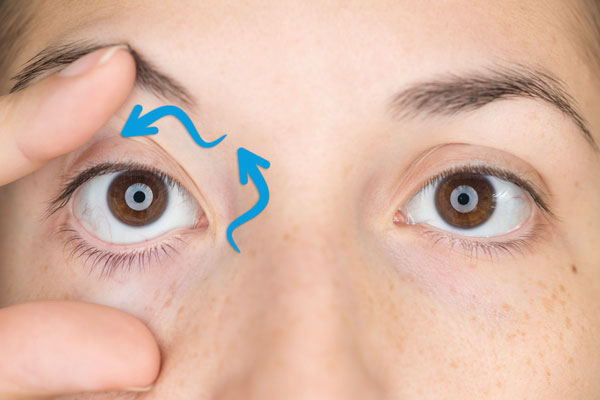
Nystagmus
Nystagmus is an uncontrollable and involuntary movement of the eyes. The movement can be horizontal, vertical, rotary, oblique or a combination of these. Nystagmus is associated with a malfunction in the brain areas that are responsible for controlling movement, but the exact nature of these anomalies is not well understood. Nystagmus can be divided into two major types: infantile or congenital nystagmus and acquired nystagmus. It is usually associated with a severe lack of vision, occurs in 1 in 5 children and in 80% of cases is a consequence of other diseases or conditions such as albinism. Congenital nystagmus occurs frequently spontaneously, however, the disease does exist in family history. It manifests between eight and twelve weeks, although it has been documented in young people, that’s why the term congenital may not be so correct. Nystagmus is also manifested in the congenital neurological malformations of the spinal cranial junction. This is one of the so-called diseases, locations at the base of the skull. 58% of the cases of live newborns with this disease suffer from nystagmus. There are also diseases related to the fetus in the transplacental form as an example of parasitosis by Toxoplasma gondii, where the manifestations in the Central Nervous System refer to pathological conditions such as nystagmus.
The problem has become a brain operation, a tumor, among others. The nystagmus can also be physiological (not pathological), due to the movements of the inner ear. When we begin a circular movement, the endolymph of the vestibular channels moves in the opposite direction, and the eyes also. When the movement ceases,also do the compensatory movements of the eyes. It can be a manifestation of Wernicke&apos’s disease. A slightly different type of nystagmus has been described whose main characteristics are its voluntariness. The case of a 53-year-old woman capable of producing a message voluntarily has been documented. The causes of nystagmus may be of congenital, idiopathic origin, or by a pre-existing neurological disorder. This condition can also be induced by the effect of disorientation (for example, after climbing a roller coaster) or by certain stimulants or medications (for example, alcohol, psycholelic drugs and dissociative drugs). This condition is not specific or characteristic of any other disease. Other possible causes are: • Aniridia • Cranial trauma • Brain tumor • Wallenberg syndrome • Multiple sclerosis • Infarction (the most common cause in people of the third age).
Acquired Nystagmus. It is a disease that affects coal miners (from a middle age, 40-60 years), with difficulties to balance and cope with any bright light (they wear visors or dark glasses). There is also a state of anxiety or depression in relation to precariousness and unemployment, nervous disorders (anxiety, depression, fatigue, weakness, lack of sleep …), visual acuity difficulties (for binocular vision), etc. And above all, attacks of nystagmus (rotating or horizontal movements, rapid and uncontrolled eyes) that arise with the changes of light-darkness, or to look up are crouched. The tremors of the head and hands arise at that moment and may fall due to loss of balance. But the severity of the symptoms is independent of the movements of the eyes or not. – Diagnosis based on work history: basic data on the characteristics of the aforementioned characteristics. RISKS Mining work with poor lighting, and difficult postures for limiting spaces in the veins. The difficulty of the illumination is so great that it does not reach the cones of the retina and only the rods of the periphery of the retina. In the attempt to focus, the person moves the eye from one side to another in a round, causing also instability of balance (as the eye in daylight is used as a visual reference to maintain balance).
PREVENTION – Good lighting equipment: sea of fixed or general type, or failing with powerful electric lamps in the helmet. The current lighting makes this disease disappear and cases are no longer detected. – The treatment depends on the type and severity of symptoms (sleep treatment with sleeping pills, …) is a chronic disease without specific treatment. The important thing is the point of good lighting as prevention, or, the possibilities of change of position, permanent disability, etc. It is valued according to the case.







